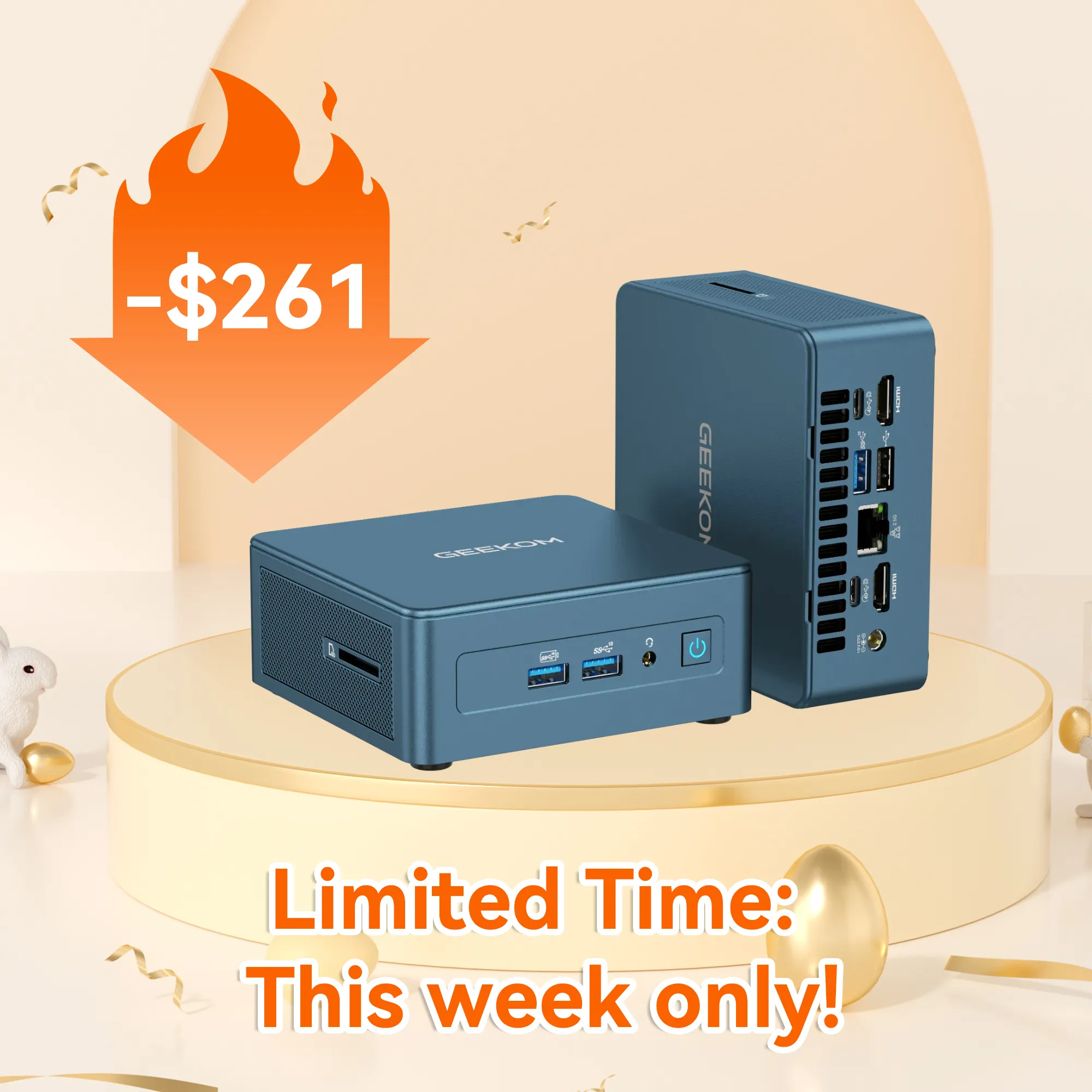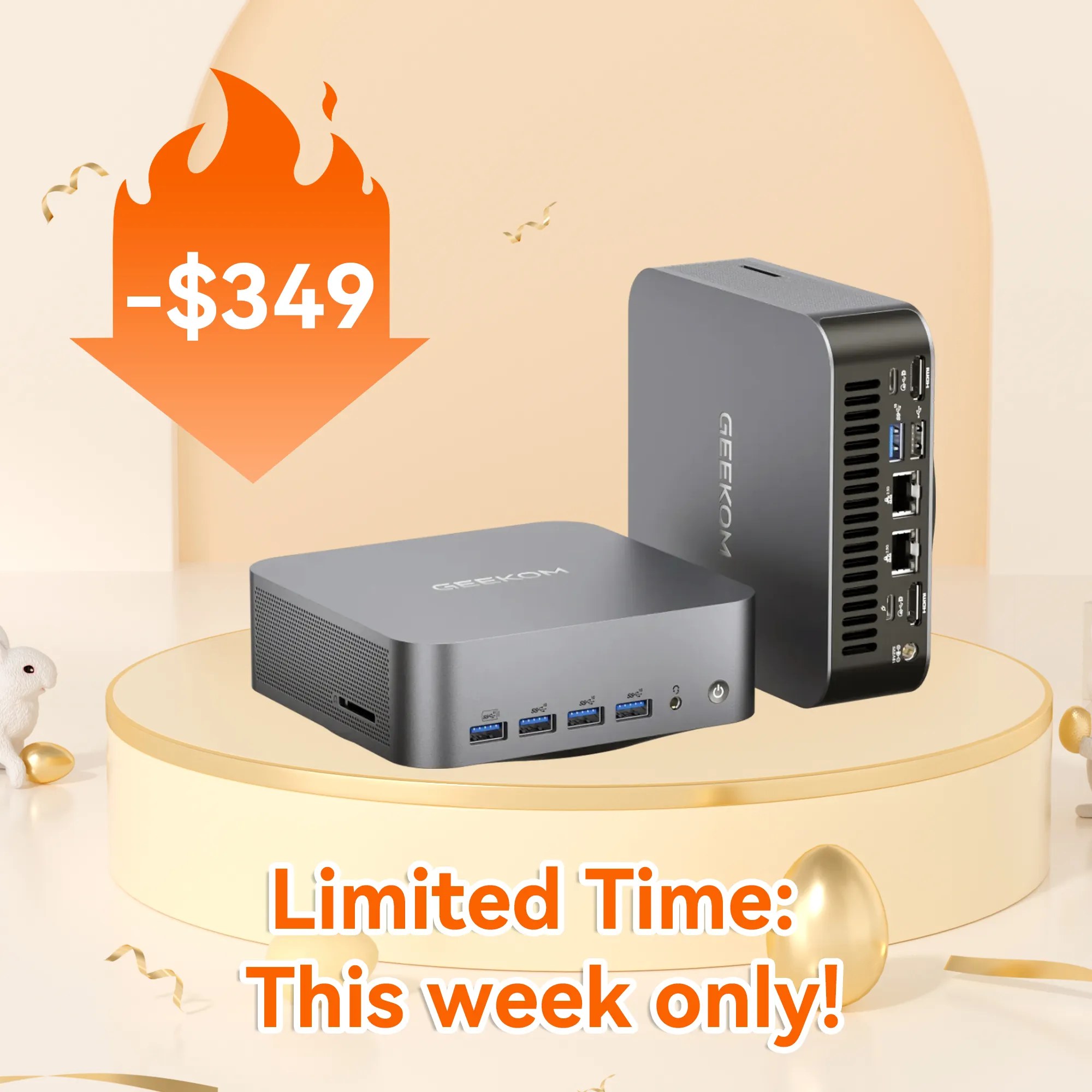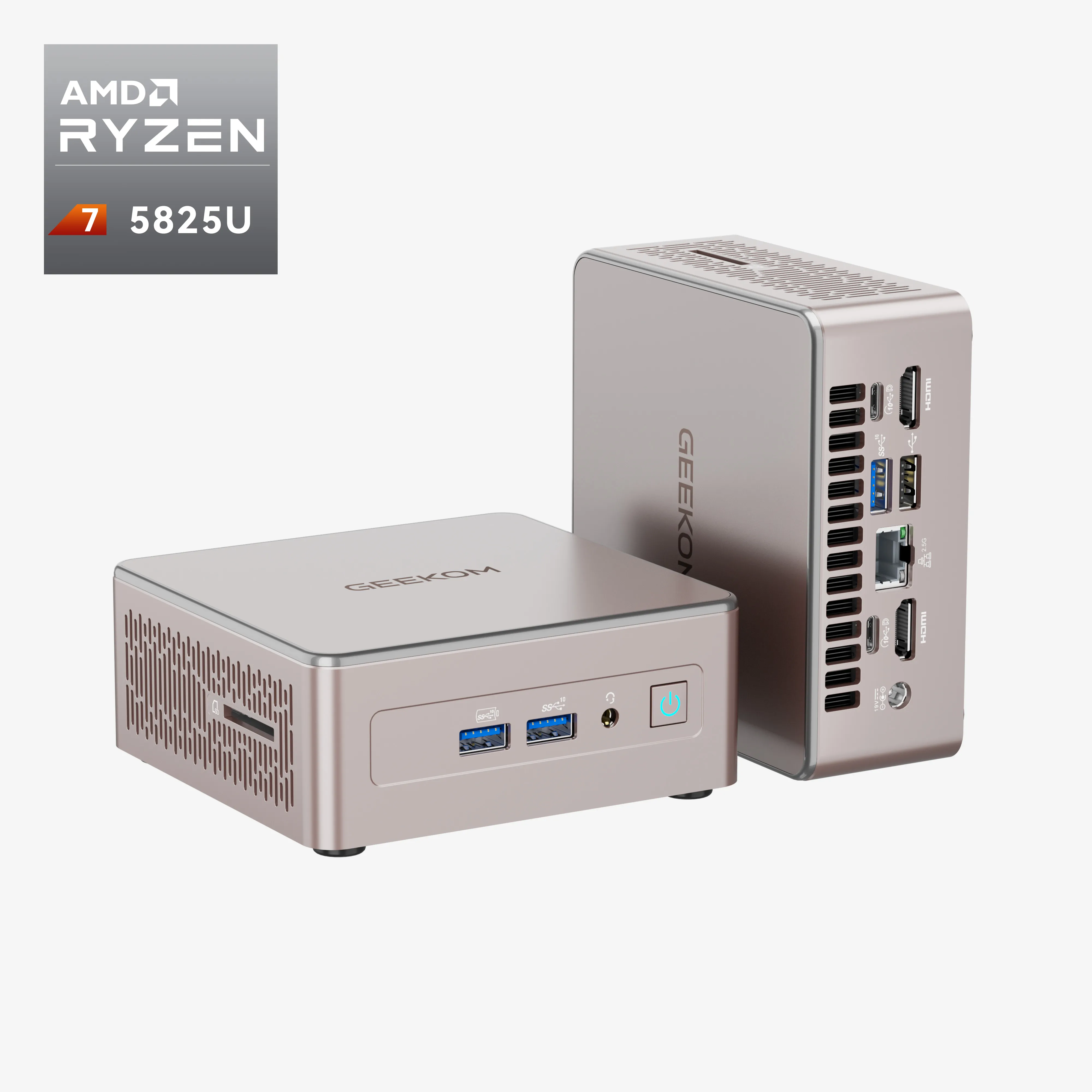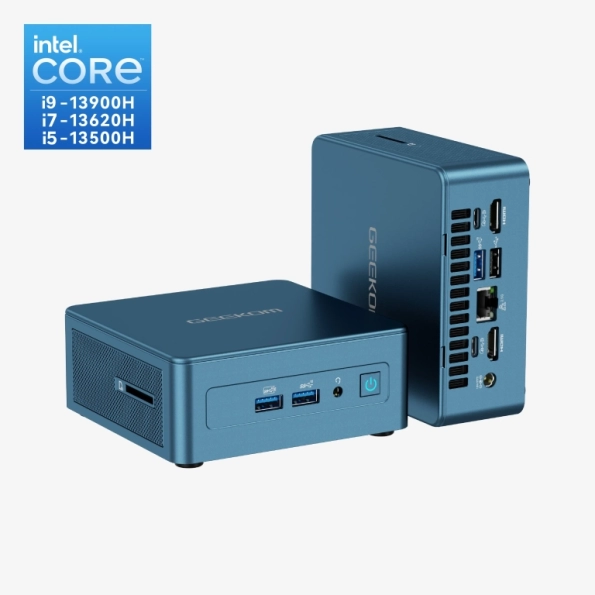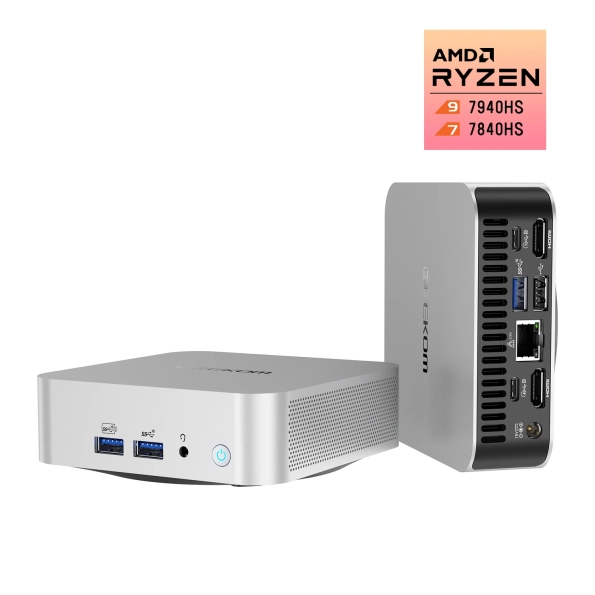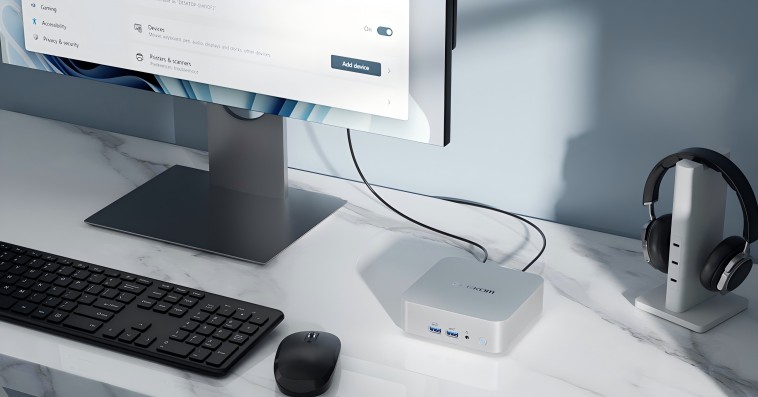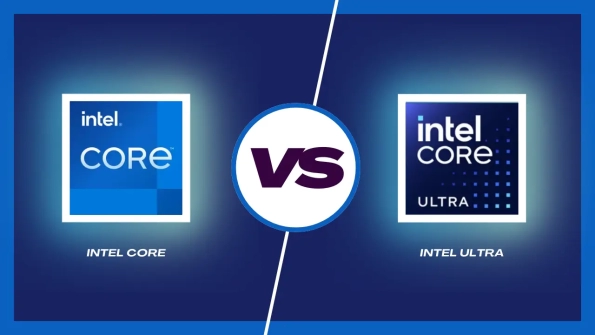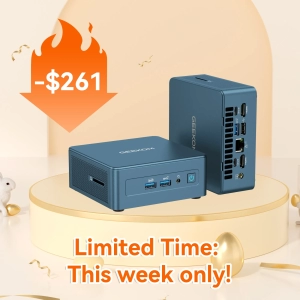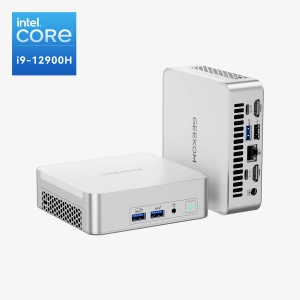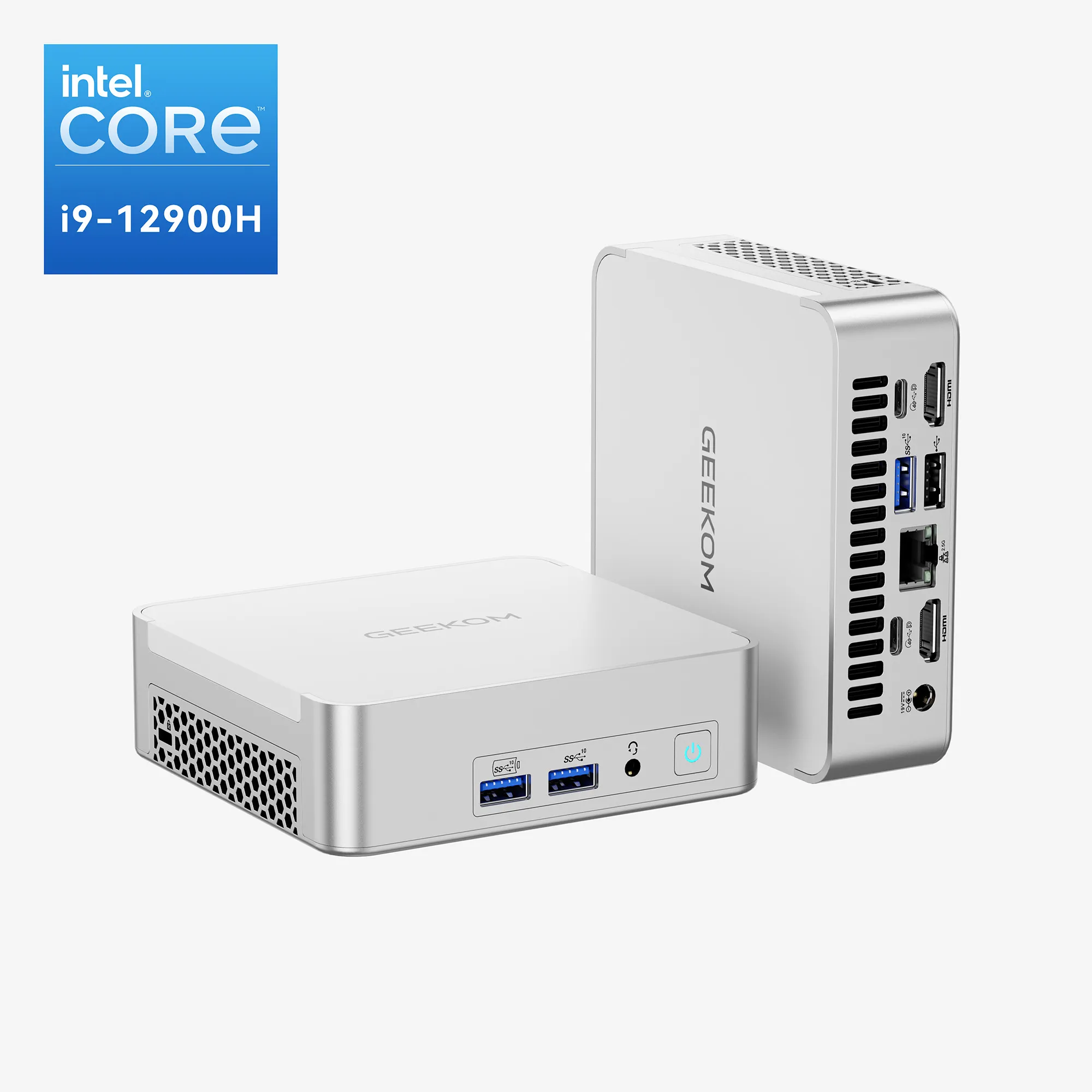Introduction
With the evolution of technology, the digital world is being adored by many retirees. There are many things that seniors need computers for in their daily lives, ranging from making calls online, especially video calls, to finding new hobbies using the internet. However, while modern systems can be complex, some operating systems, like Windows 10/11, offer accessibility features that make them more suitable for elderly users. The best solution may lie in such tools as mini PCs and simple desktops, which have excellent performance yet are small in size and come with uncomplicated designs.
These devices are easy to install and use, making them suitable for older people, with all the essential features needed for browsing online, communicating digitally, and consuming media content. It is possible to make life better through technology that does not require much money or complicated settings by focusing on inexpensive desktop computers and ultra-reliable mini PCs.
Why Retirees Need User-Friendly PCs
Retirees often find it difficult to keep up with new gadgets and digital tools as technological advancements occur. Multiple access points are one of the primary stumbling blocks. While operating systems like Windows 10 or macOS offer accessibility features, new users can still feel overwhelmed by the various settings, menus, and options available. This can make you frustrated and make people feel alienated from the technologies at their disposal.
The other typical impediment revolves around hardware reliability. Senior citizens are concerned about potential issues such as system crashes, slow performance, or unreliable network connections. While troubleshooting steps may seem complex to some older adults, having a reliable and simple system can help minimize these concerns. This situation necessitates the use of systems that are easy to understand to avoid unnecessary frustration with day-to-day tasks.
By providing streamlined, intuitive designs that are more user-centric, a simple mini PC or a user-friendly desktop computer can help solve these issues. User-friendly interfaces and simple navigation tools characterize such types of machines, thus allowing seniors to manage them for important tasks like chatting on various platforms such as WhatsApp or Facebook Messenger while listening to music from their favourite sites, such as SoundCloud, whenever they want without any problems related to the equipment configuration.
These devices usually have preinstalled settings, thus simplifying the installation process. Seniors do not necessarily require high-end machines when performing simple tasks like reading mail, viewing videos, calling friends or relatives through social media platforms, or looking at pictures on the internet. Consequently, an affordable desktop computer or dependable mini PC that meets these practical requirements efficiently without entailing additional complexities, such as gaming capabilities and multimedia editing tools, would be the most appropriate solution when choosing equipment for them at any given time. With no requirement for extra features that are confusingly advanced to them, these simpler platforms provide all necessities, enabling pensioners to enjoy advantages linked with modern devices in general.
Key Features to Look for in a PC for Seniors
When selecting a PC for seniors, several key aspects should be considered regarding simplicity of use, reliability, and affordability. The right combination of features can make a key difference in how comfortable seniors feel with their computing experience.
User-Friendly Interface
The most important feature of a computer that is user-friendly for senior citizens is the intuitive user interface. For older adults, complex menus and settings can be overwhelming, which is why they need to look for a system having big icons, easy navigation through menus, and accessible options. Such operating systems as Windows 10 or 11 come with capabilities that make them more usable, such as high-contrast mode, enlarging text, or using voice commands, among many others, thus enabling seniors to adjust their systems as per their preferences hence improving readability and device interaction on the whole. Moreover, these user-friendly computers are designed with simplicity in mind so that seniors do not have any problems while checking emails, browsing the internet, or watching videos without feeling lost during numerous functions.
Small Size and Portability
The small size of mini-PCs makes them ideal for the elderly, who may not have enough space on their tables or prefer a well-organized environment. These gadgets hardly occupy any space; they can be put in small spaces, such as on top of a small table, in bedside closets, or even on coffee tables. Moreover, mini-PCs are lightweight; hence, they can be moved from place to place easily, especially when seniors need to reorganize their living space. As a result, these mini-PCs are suitable for those individuals who need to own computers yet do not want to compromise their space or handle bulky hardware. Many people appreciate how modern-designed mini-PCs can blend seamlessly into any given setting while still providing the necessary computing power.
Performance and Reliability
Performance-wise, reliability is necessary at all costs because every senior requires a computer that runs without breaking down occasionally due to crashing or slowing down abruptly. Any reliable mini-PC meant for use by the elderly must possess some degree of resilience, making it capable of handling day-to-day activities like browsing the internet, streaming media content, or communicating with relatives through emails or video calls. Such things as slow system responses or malfunctioning hardware components can be inordinately disappointing, leading to the need for a device noted for both its stability and ease of servicing. In general, mini-PCs prove easier to maintain compared to full-sized desktop PCs as they incorporate fewer components that require servicing in addition to allowing for easy upgradation/repair.
Affordability
The fact that most old people are living on fixed incomes implies that they require affordable options when acquiring a computer. However much it may cost, affordable computers should provide necessities instead of additional premium features that make them expensive. Making such a choice will ensure that they get the best performance at their budget within such an economical desktop PC or a mini PC. The most important criterion is meeting fundamental needs such as web surfing tools, entertainment options, and communication methods while avoiding unnecessary expenses on features they won’t use.
Support Services
For elderly people who are not well-versed in technology, having good customer support is important. When it comes to troubleshooting problems or learning how to use the computer, reliable customer service can make all the difference in the world. Many user-friendly computers come with great customer support features such as phone help lines, online chat with experts, easy-to-read manuals, and user guides, among others. Additionally, some brands provide home-based assistance as well as extended warranties, which are particularly helpful for senior citizens who might struggle with setting up their gadgets or solving any issues arising there.
Best Mini PCs and Desktops for Retirees
Among the most crucial factors to consider when choosing a mini PC and desktop for seniors are ease of use, dependability, and cost-effectiveness. Different options are available for users regardless of whether they are beginners or individuals who already know how to use computers. The best choices for seniors can be categorized based on their technological proficiency levels and needs.
Beginners: Affordable and Simple PCs
Technologically challenged seniors should go for computers with easy set-up processes and user-friendly interfaces. Depending on what these users do most, a mini PC with appropriate capabilities for browsing, emailing, and watching videos can always serve them right. Most starter PCs give room for easy navigation while providing the essential features needed for daily use.
GEEKOM Mini IT13
The GEEKOM Mini IT13 is a choice to consider for anyone who is starting in computer use but requires something reliable. Powered by Intel processors that can easily handle basic operations like web browsing, emails, and video watching, this system provides smooth performance for everyday tasks. This device comes with Intel Iris Xe Graphics (UHD for the i7 version), which allows good-quality multimedia output while being energy-efficient for media playback. Wi-Fi 6E provides reliable internet access with USB 4 ports and all necessary connectors. Even those who have less working space can arrange it in their limited desks because of the compact dimensions.
★★★★★ ( 4.7 Based on 80 reviews)
- 13th Gen Intel® Core™ i9-13900H, i7-13620H, i5-13500H
- Intel® Iris® Xe Graphics for i9-13900H, Intel® UHD Graphics for i7-13620H & i5-13500H.
- Comprehensive port selection, including two USB 4 ports.
- Supports up to 8K and quad displays.
- 2.5G Ethernet, Intel® Bluetooth® 5.2 and Wi-Fi 6E.
People with a Need for More Functions
Advanced users who are within their retirement age still have some things to do using technology. For instance, one may want to communicate via video or on social media platforms. All these can be achieved by using less complicated mini PCs or desktop computers, which offer additional functionality without sacrificing user-friendliness. These systems may have better-quality images, more memory banks, and increased processing powers than before, which makes them perfect for multimedia purposes and communication, among others.
GEEKOM A7
GEEKOM A7 is a good choice for older people who want their computers to be more powerful but also easier to work with than others do. AMD Ryzen 9 7940HS processor powers it and the AMD Radeon Graphics 780M helps stream content and video calls as well as everyday social media management. It has DDR5 RAM working in dual channels with the maximum size being set at 64GB while providing options such as using SSD up to 2TB depending on what the consumer needs at any given time frame. The Wi-Fi 6E and Bluetooth 5.2 technology ensure seamless interaction with the internet and other devices, respectively. Additionally, it comes with a minimalistic design and occupies little physical space thanks to its aluminium housing, which is just 0.47 litres big.
★★★★★ ( 4.9 Based on 45 reviews)
- AMD Ryzen™ 9 7940HS.
- AMD Radeon™ Graphics 780M.
- Dual-channel DDR5 5600MT/s, up to 64GB.
- M.2 2280 PCIe 4.0 ×4 SSD, up to 2TB.
- 2.5G Ethernet, Wi-Fi 6E, Bluetooth® 5.2.
- Stunning minimalistic design. 0.47L aluminium housing.
Tips for Setting Up a Simple PC for Seniors
Setting up a simple PC or mini PC for seniors should be an easy, stress-free process. A basic approach to setup and personalization can help ensure that seniors can start using their computers confidently from day one.
Initial Setup Steps
The first step is connecting to Wi-Fi, which can be done by clicking the network icon in the bottom right corner of the screen and following the simple prompts to enter the network password. For email setup, most systems come with pre-installed email applications like Microsoft Mail or Outlook, which guide users through the setup process step by step.
Personalizing for Comfort and Accessibility
Windows 10 and 11 offer several features to make the computer more comfortable to use. Seniors can adjust text size and screen resolution through the Ease of Access settings. Voice control options like Windows’ built-in voice recognition can help those who find typing challenging. Creating desktop shortcuts for frequently used applications can also make navigation much simpler.
Essential Applications
Some basic applications can greatly enhance the computing experience for seniors. Video calling applications like Zoom or Skype are essential for staying connected with family and friends. These applications feature user-friendly interfaces with large, clear buttons and simple navigation. Basic media applications for watching videos or listening to music can provide entertainment, while simple web browsers make internet access straightforward.
Price and Value Comparison
When considering different mini PCs and desktops, it’s important to balance cost with functionality. The GEEKOM Mini IT13 offers good value for those seeking a basic, reliable computer for everyday tasks. While the GEEKOM A7 may cost more, it provides additional capabilities that more tech-savvy seniors might appreciate. Both options represent good value compared to traditional desktop computers, offering the necessary features without unnecessary complexity.
Conclusion
For retirees seeking to embrace technology, mini PCs represent an excellent balance of simplicity, affordability, and functionality. These devices have evolved to meet the specific needs of senior users, providing user-friendly interfaces while maintaining reliable performance for everyday tasks. Whether choosing a basic model for simple tasks or a more powerful system for enhanced capabilities, the key is selecting a computer that matches the user’s comfort level with technology.
By focusing on essential features like easy navigation, reliable performance, and good customer support, seniors can find a computing solution that enhances their daily lives without causing unnecessary stress or confusion. The right mini PC can open up new possibilities for communication, entertainment, and learning, helping seniors stay connected in today’s digital world.
Remember that the goal is not to have the most powerful or feature-rich computer but rather to have a reliable, easy-to-use device that serves its purpose effectively. With the right selection and setup, a mini PC can become an invaluable tool for seniors looking to maintain their independence and stay connected in an increasingly digital world.



